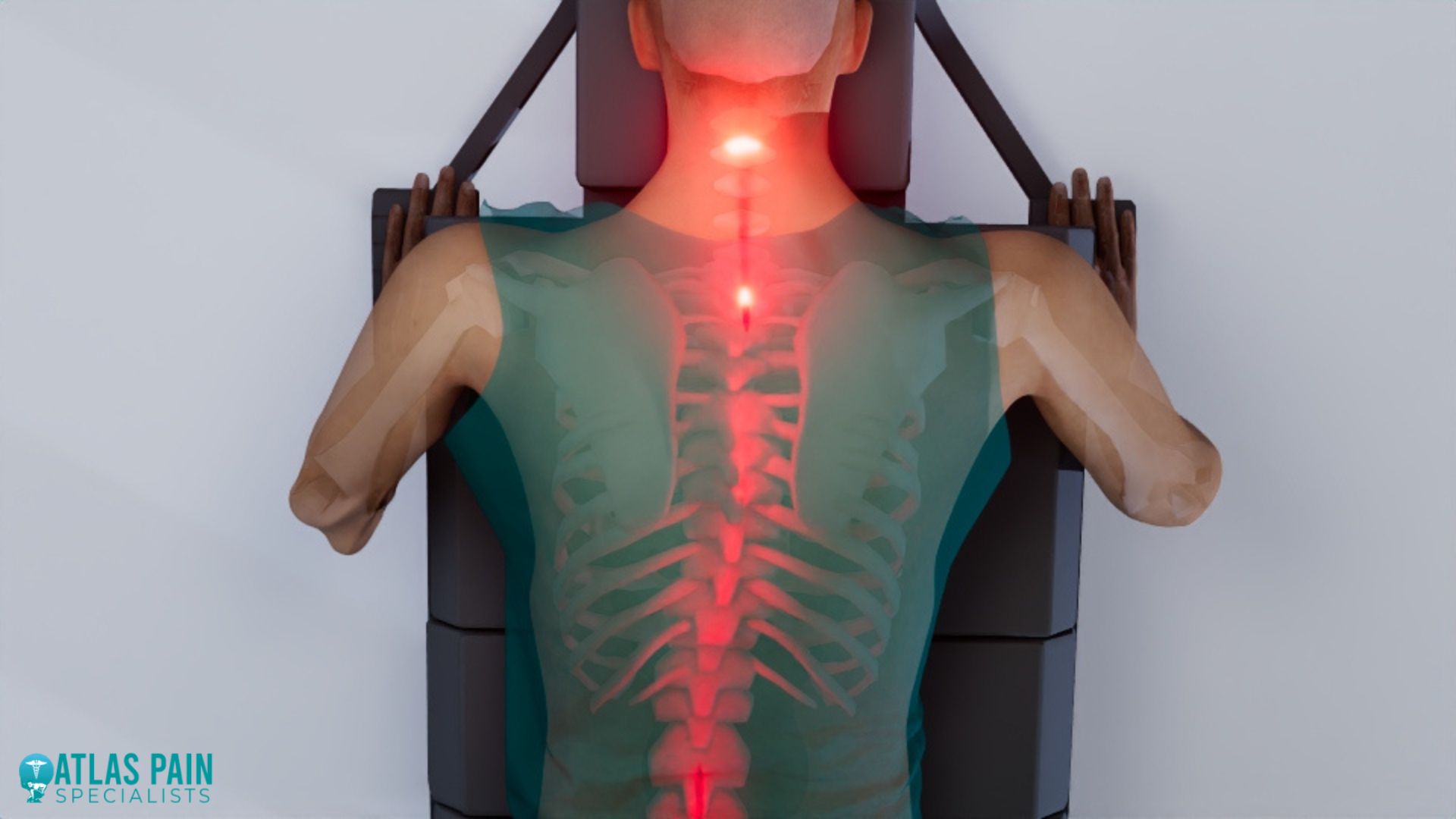

Can A Chiropractor Help With Nerve Pain?
If you've ever had nerve pain, you know how painful it can be. It is okay because you're not alone. Why Do We Feel Pain? Peripheral nerve pain affects over 20 million people in the US.
There's a good reason nerve pain (neuropathic pain) hurts so much: your nervous system is responsible for practically everything you do. It can also be very pervasive, meaning that the symptoms you experience may vary widely.
The Types of Nerves

- Sensory Nerves: These nerves relay information from your muscles and skin to your spinal cord and brain. There are three types of nerves:
- Autonomic Nerves: These regulate the automatic processes of the body, like blood pressure, heart rate, and digestion.
- Motor Nerves: Regulate your actions by relaying messages from your brain and spinal cord to your skeletal muscles.
Depending on what type of nerve pain you are experiencing, there are various symptoms that you may encounter.
Common symptoms of Nerve Pain include the following:
- Muscle weakness- is one of the most common symptoms of nerve pain, which can cause a decrease in strength and mobility.
- Burning sensations- often felt in the extremities are common nerve pain symptoms.
- Tingling, or a feeling of pins and needles- is another common symptom of nerve pain.
- Headaches and migraines- can be experienced as a symptom of nerve pain.
- Stabbing pain- is a sharp, localized pain sometimes experienced as a nerve pain symptom.
- A limited range of motion- caused by nerve pain can lead to a decrease in flexibility and mobility.
- Depression and anxiety- can be side effects of nerve pain, as they can cause feelings of hopelessness and despair.
- Hyperhidrosis, or excessive sweating- can be a symptom of nerve pain.
- Lightheadedness- is a feeling of dizziness and can be caused by nerve pain.
- The inability to detect chest pain- is a symptom of nerve pain, where the patient cannot feel the pain in their chest.
- Fasciculation, or twitching- is a symptom of nerve pain where the patient experiences involuntary muscle movements.
- Paralysis- either complete or partial, can be experienced in extreme cases of nerve pain.
Nerve pain can manifest in various ways, as we've seen. We can't stress enough how dangerous it is to go down the rabbit hole of noting a few symptoms, diagnosing, and concluding the worst possible outcome.
For this reason, if you notice any symptoms, it's best to see a doctor immediately.
What is Chiropractic Care?

Let's define chiropractic care in more detail before discussing how to treat nerve pain. Chiropractic treatment focuses on the spine and joints of the body and how they relate to the neurological system.
Chiropractic, as a phrase, literally means "done by hand". Chiropractors carefully examine how musculoskeletal, spine and neurological disorders may affect other aspects of health.
For instance, a pain symptom is often followed "upstream" or "downstream" by chiropractors. In other words, a chiropractor will look "upstream" to your quad and hips if you have knee pain. The likelihood is very high that the actual problem causing your knee pain is in your quadriceps or hip.
This is not always the case, of course. On the other hand, chiropractors are masters at comprehending the inner workings of the body and how everything connects.
Chiropractic practitioners only ever use natural, safe treatment methods. In most cases, spinal manipulation is involved in therapy procedures performed by hand.
Chiropractic treatment aims to essentially correct the body and promote proper function. Chiropractic care naturally aids the body's journey to smooth and effective functioning since chiropractors believe the body is a self-healing creature.

Chiropractors are experts in pinched nerves.
Chiropractors focus much of their schooling on the neurological system while also studying the spine. Chiropractic treatment is based on the idea that the body functions in its entirety, with the spine controlling the neurological system, which then communicates with the rest of the body.
The purpose of adjustments is to eliminate nerve interference in the body, resulting in health problems and impeding optimal function. This indicates that chiropractors have a thorough understanding of the nervous system.
A chiropractor can make an accurate diagnosis if you display symptoms of a pinched nerve through a discussion of your symptoms and history and a physical evaluation. By doing so, they can identify any potential nerve damage and spot any potential spinal adjustments to aid with your discomfort.
Chiropractors address the root causes of pain.
People usually seek immediate pain relief when they are in pain. This is often the case with pinched nerve pain, and you might be tempted to turn to painkillers for relief.
Painkillers only mask your symptoms without addressing the underlying reason, which can be beneficial for managing in the short term. The condition will deteriorate over time, causing your nerve to continue to be pinched, which could result in additional pain or more serious issues.
Chiropractic adjustments locate the pinched nerve and employ spinal manipulation to completely unblock it, eliminating symptoms and the underlying injury or problem. When a bone, joint, or muscle is misplaced or shifted from its natural position, pinched nerve discomfort is most frequently the result.
A chiropractor can release the pressure on the nerve with an adjustment that puts these structures back where they belong, providing immediate comfort and lowering the risk.
Chiropractors can do more than adjustments.
Although the primary way to treat a pinched nerve is chiropractic adjustments, chiropractors can use a variety of therapeutic techniques as needed. You might be encouraged to perform light exercises at home in addition to your treatment in the office. They will frequently involve elements of physical therapy to improve any affected muscles.
You can also receive advice on making lifestyle changes, such as food or exercise, to speed up the healing process, depending on the cause of your injury.
Chiropractic care is preventative.
A chiropractor will concentrate on treating your current pain as well as avoiding further problems from happening. This might involve techniques to apply in everyday life.
Poor posture and occupations that force us to spend much time in front of screens at our desks are two common causes of pinched nerves. Chiropractors can assist in developing a strategy to enhance your posture, including movement into your day, or alter your posture and office arrangement.
Chiropractic professionals will search for weak areas of your body if you have pinched nerve pain due to an injury. When a joint is dislocated, for instance, pinched nerves can sometimes happen; these injuries grow more frequently following a first incident.
Chiropractic professionals may work to strengthen joints and create plans to prevent injuries that could cause pinched nerves.
Chiropractors can rule out serious injuries.
Misalignments are the most common reason for a pinched nerve, which is also the easiest to fix. However, there are instances where the symptoms of a pinched nerve may be caused by something more serious, or the injury may have advanced to the point where more aggressive treatment is required.
During an examination, a chiropractor can tell when a pinched nerve is more serious than it appears and recommend you seek medical attention to prevent further complications.
Chiropractic Treatment For Neuropathy
Can a chiropractor help with nerve pain? The musculoskeletal, spine, and neurological systems are all areas that chiropractors deal with. Sciatica is a common nerve ailment that chiropractors treat.
Sciatica is a pain that radiates from the lower back down the buttock and into either one or both legs. Nerve compression is the cause of this kind of discomfort. Chiropractic care can help with nerve pain even if there are often underlying causes (such as a herniated disc or lumbar spine subluxations in the case of Sciatica).
The following are additional methods chiropractors use in addition to chiropractic adjustments to treat nerve pain:
- Ice therapy: This lessens general inflammation brought on by nerve discomfort.
- Ultrasound: The heat produced by ultrasonic sound waves softly massages delicate tissues. This improves circulation and reduces cramping, discomfort, stiffness, and muscle spasms.
- Transcutaneous electrical nerve stimulation, or TENS: To manage and reduce pain and muscular cramps, TENS units provide electrical stimulation at varying intensities.
Adjustments are always the core of chiropractic care, even if these three procedures greatly reduce pain symptoms.
Your chiropractor realigns your spine and spinal joints during an adjustment to guarantee proper operation. This allows for releasing nerves that may have been constrained or pinched. This lessens the irritability of the nerves, which frequently causes pain, inflammation, and muscular spasms.
Our bodies might become out of alignment in a variety of life circumstances. They range from bad posture at work to slip and fall injuries to auto accidents. Although chiropractors are realistic and aware, they cannot cure diabetes; they are highly confident in their abilities to help you fully recover if a spinal misalignment is the cause of a nerve being pinched.
How a Chiropractor Can Help with Sciatica

Sciatica pain is most likely the cause of a shooting, piercing pain that radiates from the lower back down to the legs. The sciatic nerve, which runs from the buttocks down to the toes, is the longest in the body.
Anytime you have a trapped nerve, disc herniation, Piriformis syndrome, or trigger point referral, the nerve may feel pain. The following are typical sciatica signs and symptoms:
- Leg pain that gets worse when seated
- Running tingling or burning down the leg
- A foot or complete leg that is numb, weak, or difficult to move
- A persistent lower backache on one side
- A crippling pain that makes it difficult to get out of bed
You may wonder if you can lift weights with Sciatica, don't worry. We have the blogs for you.
Should You Go To A Chiropractor For A Pinched Nerve?
Absolutely! Early therapy for many conditions can relieve pain, fix the underlying cause, and restore normal nerve function. Leaving an entrapped nerve untreated increases the likelihood that irreparable damage will occur.
How Does a Chiropractor Help with Tingling and Numbness?

The reason for the tingling and numbness must be determined by a doctor to select a suitable treatment plan. The doctor will perform a full physical examination if a diagnosis is unknown.
Depending on the type or severity of an event, one's assessment of it may change.
- Muscle tests involve the assessment of a person's muscle strength and endurance.
- Neurological tests involve the assessment of a person's neurological functioning and may involve checking reflexes, coordination, and balance.
- Orthopedic tests involve evaluating a person's joints, bones, and ligaments.
- Range-of-motion tests involve the evaluation of a person's flexibility and joint mobility.
If the doctor thinks it's crucial, they may palpate the affected areas or request X-rays. The doctor may order a magnetic resonance imaging (MRI) or computed tomography (CT) scan to help pinpoint the origin of the sensation.
Once the underlying cause has been identified, chiropractic care can reduce inflammation, realign the spine to relieve pressure on nerves, and restore normal nerve function. Most patients report significant improvement while receiving conservative treatments from a chiropractor.
Exact treatment plans vary from case to case but may include the following:
- A chiropractic adjustment is used to restore or improve joint mobility and reduce pain.
- A spinal manipulation is a form of manual therapy that applies pressure to specific parts of the spine to help restore proper movement and alignment.
- Fractioning is a technique where gentle, repetitive movements improve the patient's range of motion.
- The application of ice can help to reduce inflammation and reduce pain.
- Deep-tissue massage relieves tightness, improves circulation, and reduces pain.
The majority of the time, the objective is to reduce nerve compression. Exiting spinal nerves and those winding through other tight spaces in the body are especially at risk.
Vertebrae (the spinal column bones) may need to be repositioned with chiropractic adjustment for herniated discs to heal. A deep tissue massage can help reduce the pain by releasing tension and flushing out toxins contributing to the problem.
When everything else fails, chiropractic care can enhance blood flow and reduce pressure on nerves, paving the way for regular brain-body communication to resume. The benefits of chiropractic care extend beyond relieving localized symptoms like tingling and numbness.

Contact a Chiropractor at Atlas Pain Specialists
At Atlas Pain Specialists, our staff of experienced chiropractors, physical therapists, and medical doctors can provide a comprehensive approach to your care. We specialize in treating various acute and chronic pain conditions, from lower back and neck pain to headaches and other complex musculoskeletal conditions.
If you are suffering from any of the symptoms or illnesses listed above and would like to make an appointment to see one of our specialists, please contact us or complete our online form. We look forward to helping you find relief.
About Dr. Sean Ormond



